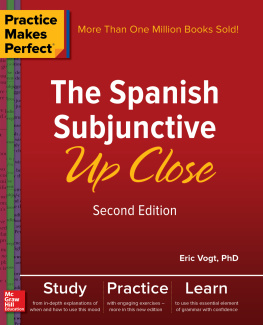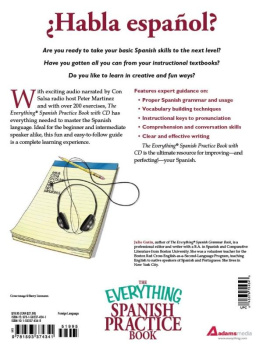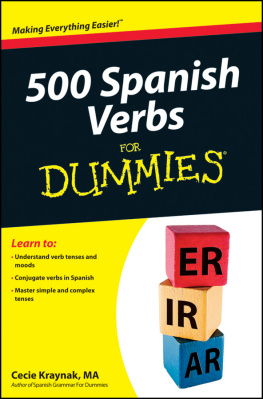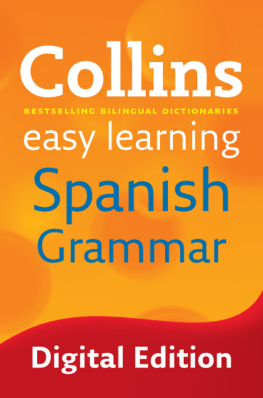

Copyright 2009 by The McGraw-Hill Companies, Inc. All rights reserved. Except as permitted under the United States Copyright Act of 1976, no part of this publication may be reproduced or distributed in any form or by any means, or stored in a database or retrieval system, without the prior written permission of the publisher.
ISBN: 978-0-07-177174-0
MHID: 0-07-177174-3
The material in this eBook also appears in the print version of this title: ISBN: 978-0-07-149226-3, MHID: 0-07-149226-7.
All trademarks are trademarks of their respective owners. Rather than put a trademark symbol after every occurrence of a trademarked name, we use names in an editorial fashion only, and to the benefit of the trademark owner, with no intention of infringement of the trademark. Where such designations appear in this book, they have been printed with initial caps.
McGraw-Hill eBooks are available at special quantity discounts to use as premiums and sales promotions, or for use in corporate training programs. To contact a representative please e-mail us at bulksales@mcgraw-hill.com.
Trademarks: McGraw-Hill, the McGraw-Hill Publishing logo, Practice Makes Perfect, and related trade dress are trademarks or registered trademarks of The McGraw-Hill Companies and/or its affi liates in the United States and other countries and may not be used without written permission. All other trademarks are the property of their respective owners. The McGraw-Hill Companies is not associated with any product or vendor mentioned in this book.
TERMS OF USE
This is a copyrighted work and The McGraw-Hill Companies, Inc. (McGraw-Hill) and its licensors reserve all rights in and to the work. Use of this work is subject to these terms. Except as permitted under the Copyright Act of 1976 and the right to store and retrieve one copy of the work, you may not decompile, disassemble, reverse engineer, reproduce, modify, create derivative works based upon, transmit, distribute, disseminate, sell, publish or sublicense the work or any part of it without McGraw-Hills prior consent. You may use the work for your own noncommercial and personal use; any other use of the work is strictly prohibited. Your right to use the work may be terminated if you fail to comply with these terms.
THE WORK IS PROVIDED AS IS. McGRAW-HILL AND ITS LICENSORS MAKE NO GUARANTEES OR WARRANTIES AS TO THE ACCURACY, ADEQUACY OR COMPLETENESS OF OR RESULTS TO BE OBTAINED FROM USING THE WORK, INCLUDING ANY INFORMATION THAT CAN BE ACCESSED THROUGH THE WORK VIA HYPERLINK OR OTHERWISE, AND EXPRESSLY DISCLAIM ANY WARRANTY, EXPRESS OR IMPLIED, INCLUDING BUT NOT LIMITED TO IMPLIED WARRANTIES OF MERCHANTABILITY OR FITNESS FOR A PARTICULAR PURPOSE. McGraw-Hill and its licensors do not warrant or guarantee that the functions contained in the work will meet your requirements or that its operation will be uninterrupted or error free. Neither McGraw-Hill nor its licensors shall be liable to you or anyone else for any inaccuracy, error or omission, regardless of cause, in the work or for any damages resulting therefrom. McGraw-Hill has no responsibility for the content of any information accessed through the work. Under no circumstances shall McGraw-Hill and/or its licensors be liable for any indirect, incidental, special, punitive, consequential or similar damages that result from the use of or inability to use the work, even if any of them has been advised of the possibility of such damages. This limitation of liability shall apply to any claim or cause whatsoever whether such claim or cause arises in contract, tort or otherwise.
Contents
Overview of past tenses
Now and then
As you have studied Spanish, you have probably had the feeling that there are just too many past tenses. The frustration people encounter when they are trying to master the irregularities of the preterite can make some want to give up, or resign themselves to being speakers of one tensethe present.
Let pop psychology gurus say what they want about living in the now; in fact, we all speak in the now, in the sense that there is no other time in which we can exist. For grammatical purposes, the present is best viewed as a dot moving on a timelinerepresenting the moment or threshold of perception and utterance. Thus, the past is ever receding, with each moment of importance marked like so many telegraph poles on a desert highway seen from a speeding car.
We humans constantly report to each other what our day was like, or where we were when a world event happened, what our first date was like, or what had already happened by the time we got home. In order not to be misunderstood, we require an arsenal of past tenses, each with its particular relation to the present or to other moments in the past, in order to communicate background information or circumstances surrounding events in the past, or to tell our mother, spouse, or boss what had already happened to bring about those circumstances. We also need to be able to express what might have happened if events had been different. All of these subtleties are communicated in Spanish and English by the use of the various past tenses. Consider how much and how often we need to do this, really need to do thisto satisfy our own need to connect with each other. Once we realize the urgency of these complexities, it becomes clear how frighteningly dull the one-dimensionality of a present-tense world would be. Worse still, in some circumstances, if we only used the present tense the dangers of miscommunication could be truly life-threatening.
The past tenses we will examine in this book include the imperfect, preterite, present perfect, pluperfect, conditional, and conditional perfect, as well as the subjunctive forms of these tenses when subordinated to past tenses. Thus, following the first seven chapters, which cover the indicative forms of the past, chapter eight examines the imperfect subjunctive (i.e., simple, or one-word past subjunctive), the present perfect subjunctive, and the pluperfect subjunctive.
As with everything in foreign language learning, it isnt enough to grasp a concept or even to know the forms. One has to learn to use them when they are needed. Just as you can know the moves of chess pieces but miserably lose the game, you can know what you want to say, know the words and concepts you need to use, but fail to apply them all properly.
A little anecdote should suffice to convince you. I once conducted an oral placement test for a student who entered my office quite eager to get control of the situation by impressing me with a list of how many languages she could speak (as if it would matter when I listened to her try to speak the one I was there to test her in!). After a few simple questions in the present tense, which she answered quite confidently, I asked her a question about where she was when the Berlin Wall came down. At this she stopped and, looking at me with that look that deer have when confronted with an SUV on a dark highway, gathered her grammatical confidence and hastened to explain: Oh, oh! I know! You need me to use the preterite and the imperfect! The imperfect is for where I was and the Berlin Wall coming down, that would be in the preterite! She placed in the next-to-beginners classwhich was just fine. In such a class, her knowledge of the rules placed her in a slightly more advantageous position, but she still needed not only to acquire the vocabulary of infinitive verbs, but also to know their forms, regular and irregular, and all the other details that probably brought you to the bookshelf and inspired you to open this book.
Next page







